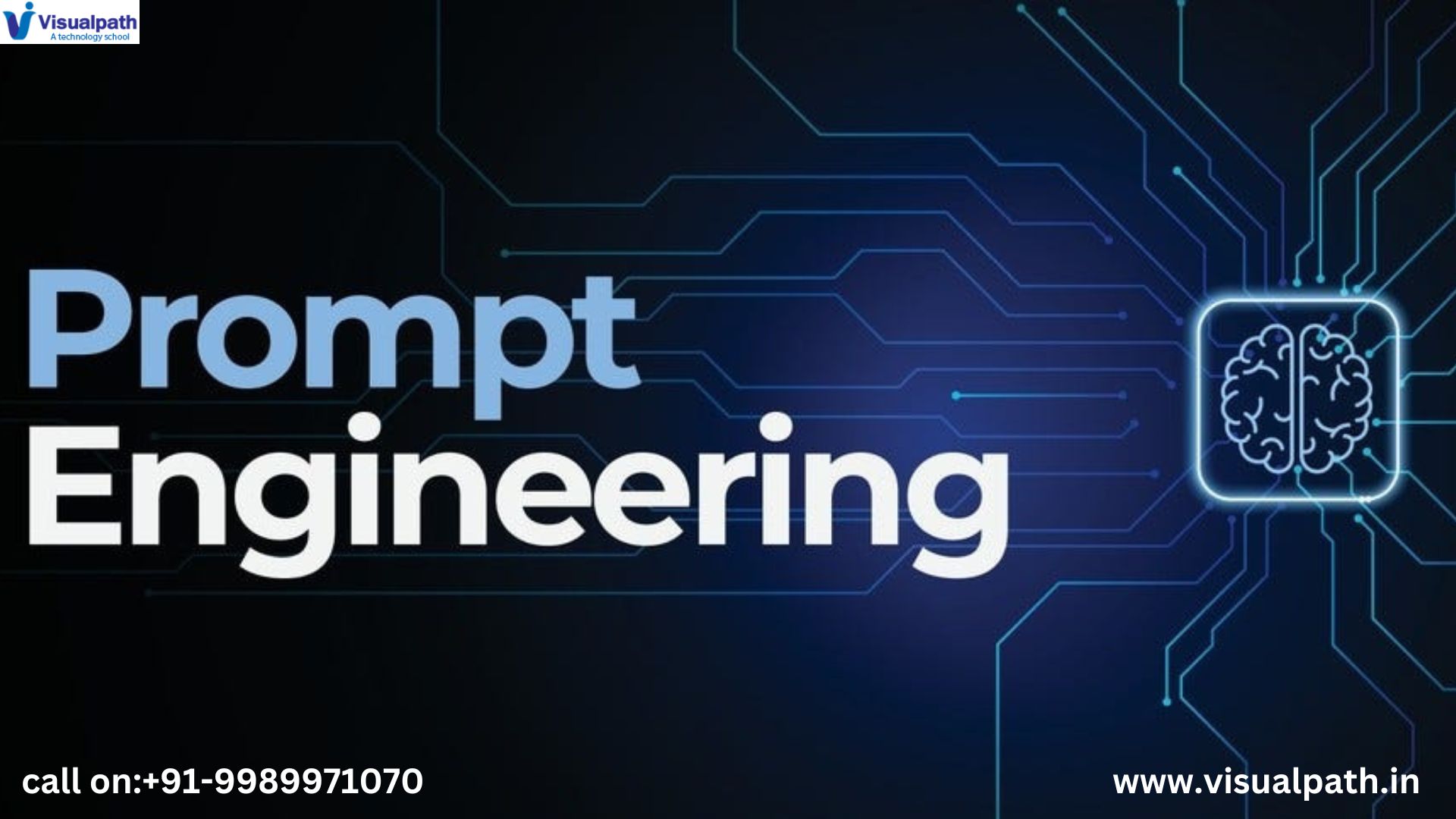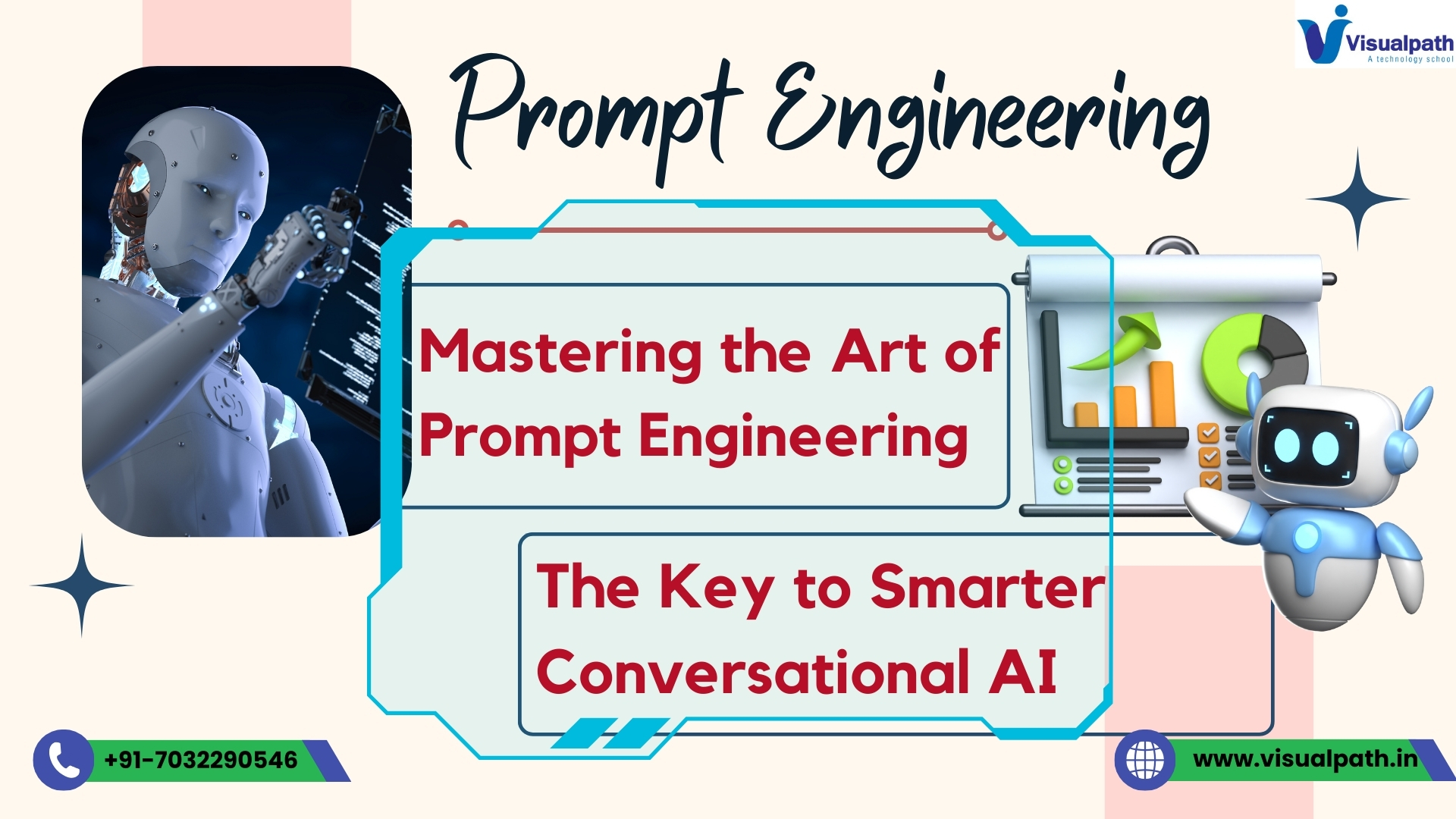artificial intelligence, particularly in the realm of natural language processing (NLP), prompt engineering has emerged as a critical skill. The ability to effectively interact with and guide AI models to generate accurate, relevant, and insightful responses is a valuable skill, and learning it requires specialized training. A Prompt Engineering Course is designed to teach individuals the art and science of crafting effective prompts that help optimize AI responses. This field is not just about creating commands; it involves a deep understanding of AI language models and how they interpret and generate language. As businesses and individuals increasingly rely on AI for content creation, customer service, and decision-making, mastering prompt engineering through a structured Prompt Engineering Course becomes indispensable.
The value of prompt engineering lies in its ability to improve AI performance significantly. Well-designed prompts can lead to more precise answers, reduce the likelihood of misunderstandings, and make interactions with AI tools more efficient. Through Prompt Engineering Training, learners can grasp the nuances of prompt design and see how subtle changes can lead to vastly different outputs. In this guide, we will explore the science behind effective prompt engineering, the key components involved, and strategies for optimizing AI responses to make the most of advanced AI models like ChatGPT and similar platforms.
Understanding the Foundations of Prompt Engineering
The primary goal of prompt engineering is to design prompts that guide an AI model in producing the desired outcome. During a Prompt Engineering Course, students learn that AI models rely on pattern recognition, context, and syntax to interpret input prompts and generate relevant responses. These models are trained on massive datasets of text, from which they learn language patterns, relationships, and structures. However, they do not inherently understand language in the way humans do; they predict responses based on learned patterns. Prompt engineering bridges this gap, allowing users to frame requests in ways that the model can best understand and respond to.
Prompt Engineering Training emphasizes clarity, specificity, and structure when crafting prompts. For instance, rather than simply asking an AI to “describe technology,” an optimized prompt might ask, “Explain three major advancements in artificial intelligence over the past decade, including their impact on various industries.” By providing specific instructions, prompt engineers can guide the AI to produce more focused, informative, and structured responses. Through training, users learn how to formulate prompts with the right level of detail and focus, enabling the AI to deliver outputs that are not only relevant but also highly accurate.
Techniques and Strategies for Effective Prompt Engineering
An essential part of a Prompt Engineering Course involves understanding various strategies to improve prompt effectiveness. Some common techniques taught in these courses include framing, structuring, and iterative prompting.
1. Framing: This involves setting a clear context or background for the prompt. Framing helps to direct the AI’s “attention” to relevant aspects of the topic. For example, a prompt framed with “As a financial advisor, explain the impact of market changes…” can help the AI respond from a financial perspective. Framing is crucial when users need domain-specific responses, as it instructs the model to prioritize certain knowledge areas.
2. Structuring: The structure of a prompt can greatly influence the quality of the response. During Prompt Engineering Training, participants learn to use bullet points, questions, and step-by-step instructions to encourage detailed responses. For instance, breaking down a complex question into parts or requesting a response in a specific format, like “list three advantages, followed by examples,” can lead to clearer and more comprehensive answers.
3. Iterative Prompting: Sometimes, a single prompt is insufficient to get the desired response. Iterative prompting involves refining and adjusting prompts based on previous outputs. Through a Prompt Engineering Course, learners develop the ability to test and tweak prompts, enhancing them through trial and error to achieve more accurate and relevant results. This iterative process is essential for handling complex or nuanced questions.
Moreover, students learn that different models may respond better to certain types of prompts than others. For example, ChatGPT can sometimes respond more creatively or informally if prompted in a conversational style, while a more structured and formal prompt may yield professional responses in business-oriented AI models.
Practical Applications and Benefits of Prompt Engineering Training
The skills learned in a Prompt Engineering Course are applicable across various industries, from customer service to creative content generation, data analysis, and more. One of the main benefits of prompt engineering is that it enables professionals to obtain tailored responses from AI, which can save time, improve accuracy, and enhance productivity.
For instance, customer service agents can use prompt engineering to generate quick, helpful responses to customer queries. In marketing, professionals can craft prompts that help AI generate creative content ideas, advertisements, or social media posts aligned with brand messaging. Data analysts, on the other hand, can use prompt engineering to generate explanations, summaries, or insights based on complex datasets, making it easier to communicate findings to stakeholders.
Through Prompt Engineering Training, participants also gain the ability to troubleshoot and refine AI interactions, reducing the risk of receiving irrelevant or off-topic answers. In industries that require precision and compliance, such as healthcare and finance, this skill becomes even more valuable, as prompt engineers can guide AI systems to produce reliable and accurate information within regulatory guidelines.
Conclusion:
As artificial intelligence becomes more integrated into various aspects of work and life, the demand for individuals skilled in prompt engineering will only grow. A Prompt Engineering Course equips professionals with the techniques and knowledge needed to interact effectively with AI, guiding these systems to produce accurate, relevant, and high-quality responses. Through Prompt Engineering Training, users develop a nuanced understanding of how language models work, how to frame prompts for different needs, and how to apply prompt engineering in practical scenarios.
Mastering prompt engineering is essential for anyone working with AI-driven tools, and as the technology continues to evolve, those with these specialized skills will play a critical role in bridging the gap between human intentions and machine responses. Enrolling in a Prompt Engineering Course offers the knowledge, experience, and best practices needed to optimize AI performance and make the most of this transformative technology. By understanding and applying prompt engineering techniques, professionals can harness the full potential of AI, transforming data and information into actionable insights across industries.
Visualpath offers for Prompt Engineering Training with real-time expert instructors and hands-on projects. Our Prompt Engineering Course, from industry experts and gain hands-on experience. We provide to individuals globally in the USA, UK, etc. Call +91-9989971070.
Course Covered: PromptGen, OpenAI, AI, GitHub, ChatGPT, A/B Testing Tools, Agenta.
Attend Free Demo
Call Now: +91-9989971070
Whatsapp: https://www.whatsapp.com/catalog/919989971070
Visit: https://www.visualpath.in/prompt-engineering-course.html




